- English
- 中文
Epidemic Situations and Services Innovations: China
Good services do not just happen accidently, they are thoughtfully crafted and designed.
Triggered by a forced change, this past month, the Service Industries in China have needed to go through one of the greatest adjustments in modern history. Reinventing, redesigning and rethinking the ways they deliver value to customers.
This Corona Virus has created distance, disrupted lives and slowed down time in one of the fastest markets in the world, China, but it has not stopped all services. Under the epidemic condition, services have needed to evolve quickly. Something as simple as getting Medical Masks, went from waiting in lines for hours at the pharmacy, to then online registration and reservation and pick up, to no-contact delivery in the community after reservations. In the span of a few days we watched three rounds of service iterations take place.
For some people, great danger brings great opportunity. Although this damn Coronavirus has caused tremendous trouble for individuals and business, we are open to the optimistic view, that most troubles will reside, and the hardships will slowly settle, and China and the world can learn from what has taken place, and improve more in the post-epidemic era to come.
We believe that Human Creativity, Design and specifically "Service Design" are critical in supporting effective problem-solving in difficult times like these. Enabling people to creatively make positive and thoughtful change in life and across industries.
Here is a recap of 10 cases and examples of rapid service innovation taking place in China, collected by team members of China Bridge during the first weeks of this epidemic.
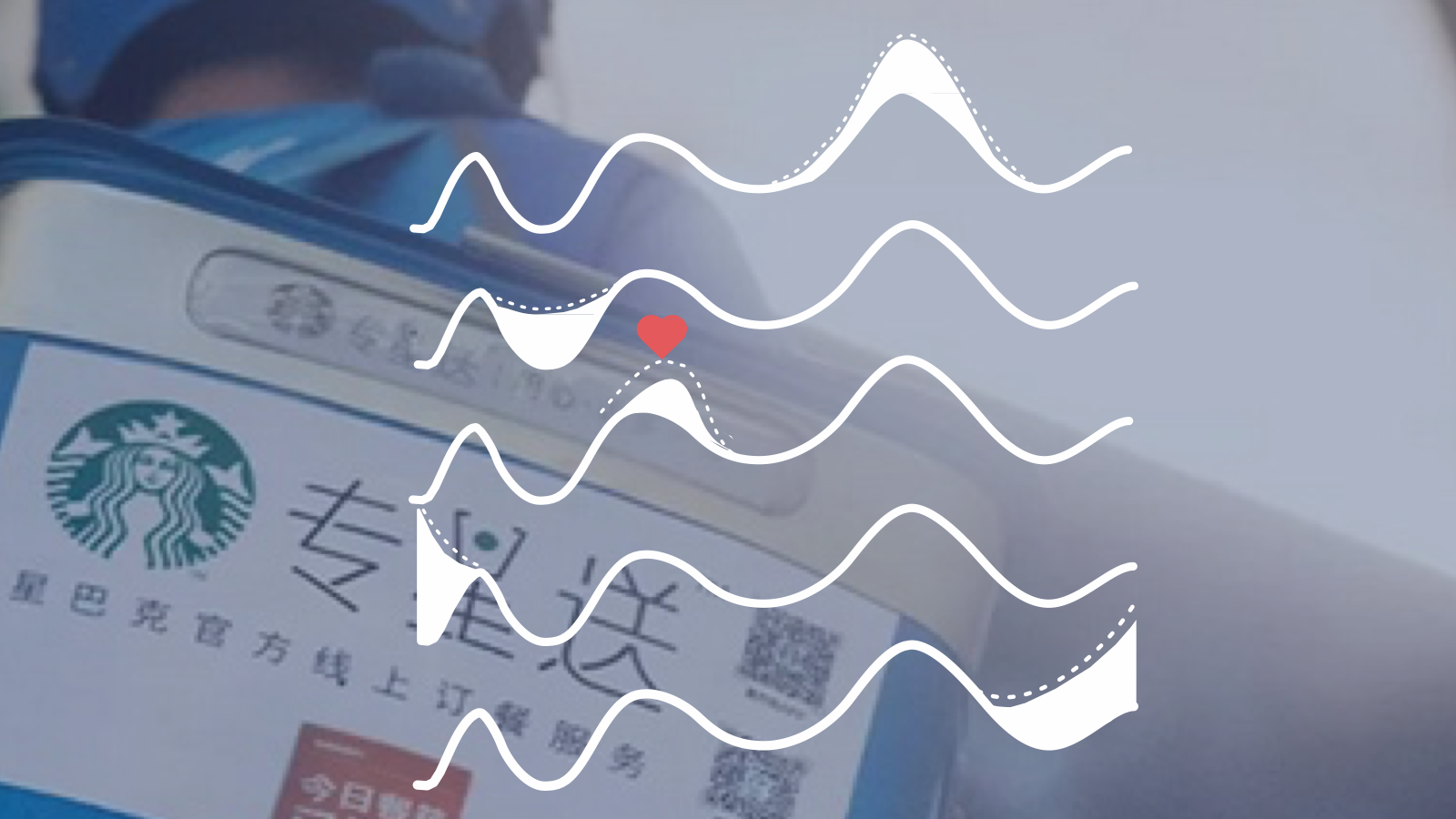
When there is more danger, there are more opportunities to 危 & 机
"When the economic impact brought by the NCP (Novel Coronavirus Pneumonia) effects how people eat, the impact of epidemic situation itself is on people’s mind." When the psychological state of people is drawn onto a curve, according to points in time, the highest positive points are called "Happy Points”, and the lowest points are "Pain Points".
Whether you feel touched, anxious, amazing, angry, proud, disappointed, hyped, panic - life will always go on, so will services to serve life.
I'm going to take you through some of the innovations that we experienced during this outbreak, in the areas of public service innovation, cross-industry enterprise service innovation and social services. They will be broken down by using Ten Ways of Creating Emotional Value Through Service Innovation. I hope it inspires you as much as it does for us.
1. Increase Peaks
These days, I go to the supermarket every day. It saddens me to see all the empty shelves. Then it hits me: wouldn’t it be nice to have a proper French meal at home?
Maison Papillon, a Michelin Stared French restaurant located in a small two-story house in Jing An district offers “Contact-free safe food delivery”, which allows guests to choose either instant delivery or self-pick-up. More importantly, buy their ingredients and get a recipe. I pictured myself cooking a Michelin dinner at home and was tempted.
Having a hard time understanding the recipe? No worries. The beautiful chef will show you how to make meals like Australian sirloin steak, black truffle sauce, caviar and sea bass hand by hand 24 hours a day online.
You will also receive a limited Wellington Steak meal if you order a day in advance. Just in the past two days, they launched a special Valentine's Day delivery menu - "a romantic candlelight dinner at home with your partner". A meal that comes with romantic candles is a good example of elevating peak experience.
“Increase peaks” means to elevate the happy point to the point where customers would go crazy over the provided service and would be willing to share it with others.

2. Flatten Troughs
The biggest fear people have when it comes to food delivery is person-to-person infection. Therefore, many businesses launched a variety of contact-free services. Starbucks launched a "contact-free Starbucks experience" and "Starbucks delivery" takeout services using special sealed bags and lids. All the food delivery drivers take body temperature measurement daily, and they will have special pick-up tables and sterilized meal boxes.
Not only do they make sure every service link on point, but they also let customers feel the sincerity of the brand. "Even if there is no physical contact, there are still smiles under the mask." This Starbucks' tweet also received 100,000+ likes and shares.
In a nut shell, a Flatten Trough is achieved by making the pain point less painful to directly improve customers experience at the moment of pain.

3. Improving Moments of Truth
Under the epidemic, many pet hospitals and pet care shops received help calls. Many people who leave Wuhan and other locations temporarily before the Chinese New Year holiday are separated and worried about their pets. With a unknown return date, pets staying in Wuhan are facing the risk of running out of food.
A pet store in Wuhan is equipped with AR smart glasses on-site service, on-site feeding, live video, and voice interaction, so that pets have the necessary care. The pet shop's full protection allows pet owners to feel more at ease, and more pet shops also set up "love dispensers" to help stray cats and dogs.
Optimizing these key moments that might have been "happy" points, redesigning services can make customers love you more.

4. Starting Strong ”凤头“
One of my colleague’s regular-used home medicines are out of stock. In the past, she used public transportation to go to the hospital to dispense medicines. However, in the severe epidemic of the new coronavirus, she had to seek help from online pharmacies in order to avoid unnecessary exposure to the risk of transmission.
Encouragingly, from the initial consultation, patient registration, call back to delivery, my colleagues received all the medicines within just 2 hours. The on-phone service from the other pharmacy was professional and concise, and the intervention of the online pharmacist helps confirm the “prescription” and informs colleagues that the procedure could be simplified when the second purchase is made.
However, prescription drugs are different from ordinary online shopping. Online drug purchase depends more on the expertise of the pharmacist and the legality of the drug. This is what starting strong means. Buying medicines online brings us convenience and surprises. Behind it is a series of stakeholder relationship reconstructions.
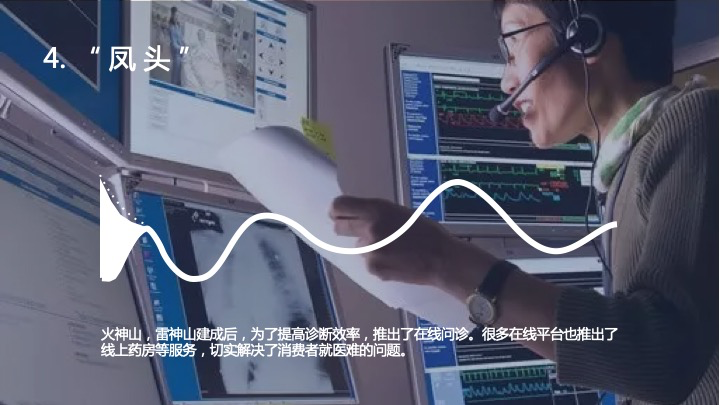
5. Ending Strong ”豹尾“
At present, many auto companies are joining 4S car shops for online customer service. One of the automobile companies joined hands with more than 200 dealership stores across the entire network to open online. They offer customer service 24 hours a day, such as VR car viewing, online consultation and even online car purchase through online flagship stores of various dealerships.
When delivering a car to the customer, they will not only give the customer a car key, but also design an impressive sense of ceremony for them-a small delivery party for the customer. From unveiling the car, applauding customers, taking photos and videos, and organizing parties, customers have been deeply moved by a series of actions.
This is what ending strong means. The service will still continue after the transaction is completed. It is the start of a tight relationship between you and the customer.

6. Extend the customer experience journey
Feng Chao Smart Cabinet’s (self pick-up delivery box) "Mutual Assistance Mask Sharing" function was launched recently within TenCent’s WeChat’s miniprogram platform. "Mutual Assistance Mask Sharing" supports individuals in self-help donations of protective masks for others that are in need, considering there are 180,000 Feng Chao Cabinets across the country, they have rapidly created a new O2O service feature, providing a new mechanism that helps reduce personnel contact, while increasing access to masks for people in need.
For the Mask donor, there are no courier fee’s. For the recipient, if you choose to pick up at Cabinet or counter there is no fee charged. If you choose have sent direction to home, they would need to pay for the courier fees. Through this approach, Feng Chao and Shun Feng extended everyone's experience journey and turned ordinary shipping services into a “delivery of care and kindness” service.
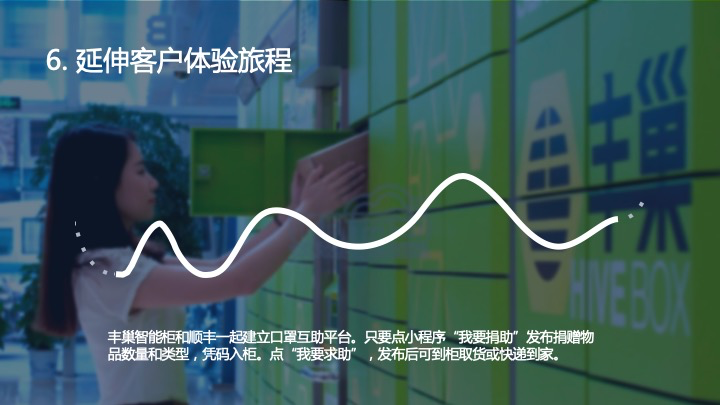
7. Skipping Phases & Activities
In China, most people know of Hema Xiansheng (alibaba’s future retail stores). While they have great saturation in some markets, not everyone lives within their delivery range. So people do stop and buy things, however, with the current situation, people are not willing to enter the stores or are to afraid even go outside.
Hema developed a set of solutions to solve customers' pain points, first by opening a car shuttle lane in the parking lot of the store for pickups. Customers place an order in advance on their APP and when the customer drives to the pickup point, on-site employees will first guide help them pick up their orders then put them in the customer's car to complete the pickup process.
For car owners, the new pickup method skips the stages and activities of finding a parking space in the underground garage, shopping at the store, and queuing for checkout, and even lifting the orders and placing them in their trunk. For Hema, we can see that it helped to calm fears, creating new options for revenue, while also allowing for continued services with quality and it also allowed for re-distribution of the staff to support different stores during peak hours.
In the past, we often thought it is important to remove friction, and skip as many service stages and activities in the development of a new experience as a way to create convenience for customers. However, in this case, we are actually seeing the opposite, there is a specific need to add in new steps and rethink the journey, and increase service stages.
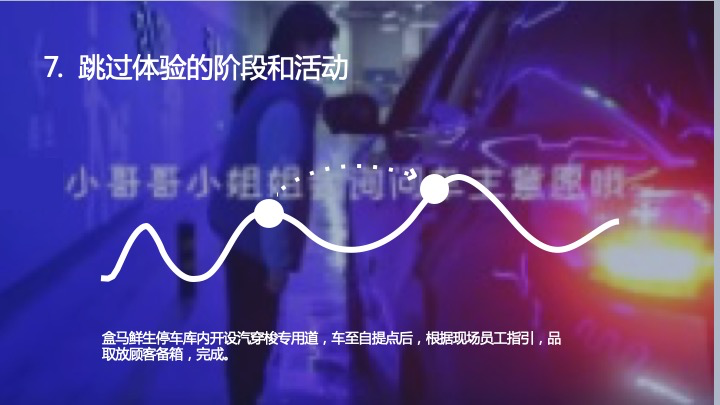
8. Re-organizing service phases and activities
In the past weeks many retail business had to stay closed, more than 1,800 employees from 32 unrelated companies in the hospitality industries, like hotels, cinemas, department stores, shopping malls, car rental companies temporarily joined Hema Xiansheng to became "shared employees". After passing a fast track training, they took up new positions, while retaining the original positions until work resumes, they could receive an additional income while also help Hema cope with the increased demand for home food delivery.
This "Shared employees" breaks the original order of "hiring first and then using". This action also breaks the typical barriers to employment in the industry, coping with the challenges of insufficient manpower, high cost of training new employees, and long cycle times getting people trained and can alleviate the problems of employee’s productivity and cash flow issues often seen during highs and lows in the catering industry. On the surface, it could be seen as a type of part time, or freelance work, however, in this case the both the employee and the employers do not know when things will get back to normal.
We can see that when going through a process of reordering, you can often identify areas of improvement in efficiency and unlocking new possibilities.
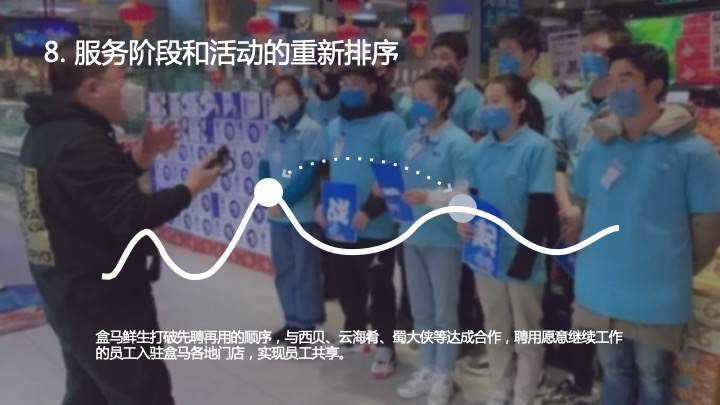
9. Intelligent Experience
It has become a daily routine, checking out the real-time, national epidemic data updates. "Community Quick Check" recently launched, you can check if there is any cases of infection nearby any location. It seems that other apps are also accessing the data, such as Ink Weather and Baidu Map, which allow for querying cases nearby.
At a press conference held by the State Council on the afternoon of Feb 10th, Director Chen of the Ministry of Civil Affairs issued a call for support: "Can we develop a software that serves the community to fight the epidemic? Ali Cloud responded immediately and said: “we are ready and waiting for command”. Seemingly organically, a community of smart epidemic prevention and control mini-programs became available, helping frontline workers to complete tasks necessary for keeping society safe; entry and exit registration, health check-in, and epidemic notification. In addition, a fast response of intelligent hardware products such as temperature stickers, AI Cameras, and door stickers became networked together to help monitor the health status of people entering and leaving the communities.
In parallel, to protect the safety of grassroots personnel in the community, Alibaba Cloud launched an “intelligent outbound robot”. Through the application of intelligent outbound phone calls, community workers can make outbound calls to residents in the community, especially high-risk groups (suspected cases with medical observers), helping to gather and organize real-time health information such as body temperature, reports of diarrhea, breathing issues and automatically generating a report.
In the age of intelligence, merchants can use artificial intelligence technologies to "guess what you like" in order to make more sales. However, In the current time of this epidemic, enterprises are finding meaningful use for intelligent product and service designs that are integrated, which can rapidly change the governance mode and public services of the community and the entire city.
What possibilities are there for services under artificial intelligence in the future? We believe Service Design be key to holistically bridging: human, digital, physical and AI generated experiences.
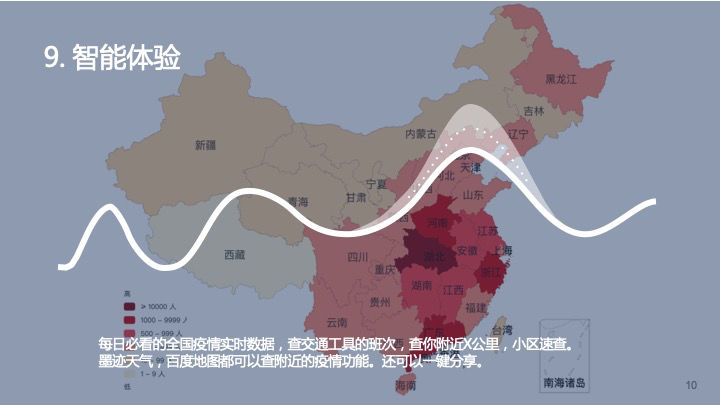
10. Complete Redesign
Last week, two major specialized hospitals for treating patients with new pneumonia in Wuhan-Huoshenshan and Leishenshan Hospital, were built one after the other, and patients had been officially admitted. Although the construction time is short, compared to the Beijing Xiaotangshan Hospital in 2003 during the SARS era, Huoshenshan and Leishenshan Hospital are more complete and more intelligent in terms of engineering design, software and hardware configuration.
Take Huoshenshan Hospital as an example, with a total construction area of 60,000 square meters, 419 wards, 30 ICU intensive care units, and 1,000 beds, including information and communication networks, waste treatment systems, intelligent management, testing and treatment equipment, etc. Medical facilities are readily available.
In the traditional medical system, many things that have not been applied or are about to be applied have been applied in the newly built Huoshenshan and Leishenshan hospital, which is a complete redesign.
More changes will be needed in medical services moving forward, including new approachs to online prescription drugs, online consultations, the patient and hospital journey.


